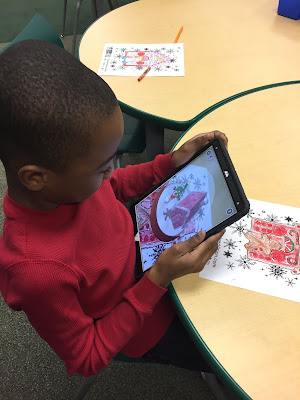Emerging Technologies in Education
The spring of 2020 pushed emerging technologies right into our virtual classrooms. These up and coming technologies may have only been in our “maybe we will use in the future” to how do we integrate them now with blended or virtual learning. Some of the technologies got an upgrade as the demand of what schools needed to finish out the school year and now thinking of what school will look like in the Fall.
I saw a very funny meme stating if you could go back in time to give 3 words of advice to your past self what would you say “invest in Zoom”. While Sykpe and Google Hangout had been an emerging tool for quite a while, when the pandemic arrived everyone seemed to be scrambling to understand and use Zoom. Microsoft Teams and Google seem to be trying to match the capability of Zoom. I believe this is a perfect example of an emerging technology that became part of the educational landscape in record time.
Learning management systems, open educational resources, and online courses are now allowing teaching practices to evolve to be increasingly flexible and accessible.
Emerging technologies in education all share a similar objective; to revolutionize the learning process of learning for students. These technologies pledge to better enhance the way teachers and students work. Let’s take a look at a few. Source for this list is found at 7 Emerging Technologies That Will Reshape Education in 2020
Emerging Trends
Augmented and virtual reality are being used to expose students to cultural experiences they may not have the means to experience otherwise. Augmented Reality claims it is the best way to capture the dreams and imaginations of humans. And by 2020, it promises to help students capture such imaginations with the sole aim of improving their learning process.
Adaptive learning is a technology that provides learning activities to students, based on their needs and learning style/behavior. Consider adaptive learning as a piece of tech which adapts to every students’ needs in a short time. It helps students to adapt to unique learning paths that are entirely based on their interests and learning ability. We see this progression with the idea of more personalized learning tools. Although adaptive learning originated from artificial intelligence, it still actively provides customized resources as well as top learning activities to address the special needs of a learner. This technology has potential to help all learners in a more personalized learning environment.
Artificial intelligence (AI) will continue to find its way into education systems AI is very well regarded as one of the most discussed technology trends in the world. If you would like to go further in seeing some examples, check this article of 3 real-life examples of AI in education showcasing a virtual teaching assistant, using AI for analytics, and learning a new language.
Along with AI, competency based technology allows students to be matched with learning activities that are based on their level of learning ability. In more detail, competency-based education provides a means for students to advance their learning experience based on their ability to master a skill. This allows students to learn at their own pace regardless of the environment.
Through competency-based education, students can efficiently provide better outcomes. It helps to measure outcomes that are entirely based on a student’s objective demonstration of competency in a given area.
Gamification will improve. The principles of gamification require delivering learning objectives using game mechanics that make learning fun.
Why is it significant? 7 Things you should know about emerging technologies states that emerging technologies for teaching and learning spaces are significant in three broad ways. First, they nurture further movement away from a “sage on the stage” model to one of collaboration and deeper student engagement in learning. Second, they facilitate new, more vivid learning experiences, such as those that can be created using AR and VR and that enable students to experience places they could not otherwise visit. Third, their potential to improve cognition and engagement can enhance learning.
Emerging technologies in teaching show great promise for engaging students in more active and personalized learning and deeper participation in collaboration. By fostering innovation in pedagogy, these technologies have the potential to enable and stimulate new developments in learning designs.
By facilitating deeper student engagement in leaning, emerging technologies can support current trends in learning design, including improving the way we assess how students learn and what they are learning.



As a history teacher I can find a lot of value in the advancements we've made in augmented reality experiences for students. This past year I started using google cardboard glasses in my classroom so that students could visit a bunch of different historical sites. A lot of them loved the experience and they got a lot out of feeling like they were there rather than just staring at a picture. I wonder if eventually there will be ways to continue to improve this technology? There were definitely a few glitches I encountered using this but I think with time these tools will just get better and better.
ReplyDelete